14 April 2022
Lies, Damned Lies and Coronavirus
Where are we now?
by David Chilvers

It’s been five weeks since my last article on COVID-19 statistics. Apologies for the radio silence but after two years of analysing and writing about the data, the pesky little virus finally got me and laid me low for a few weeks. I was not alone in that, with the Office for National Statistics weekly survey showing cases at an all time high of 1 person in 13 infected in early April (which equates to about 4.5 million people infected).
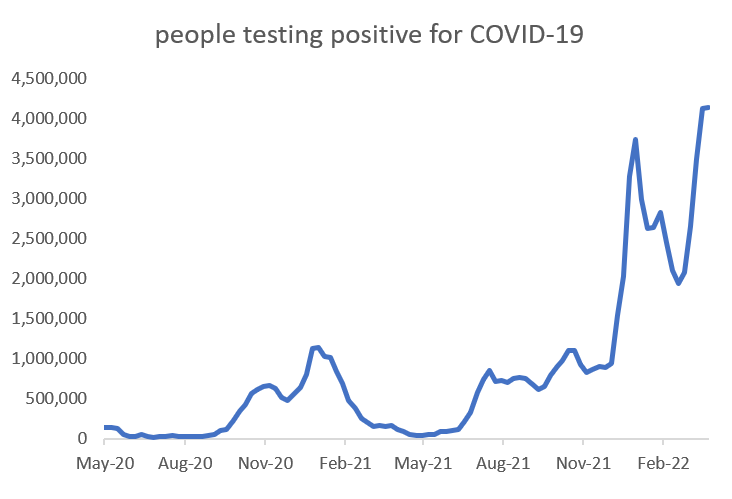
This data comes from a representative sample of households, so it is not subject to the complications of differential levels of testing seen in the official figures reported on the coronavirus website every weekday. Had this been last year, this level of infection would have created headlines, fear and a national lockdown. But we are in a different phase, where we are “learning to live with the virus” as we do other infectious diseases such as influenza.
The effects of the vaccine programme, the acquired immunity through infection and a milder if easily spreading variant have meant that these historically high levels of infection have not fed through into hospitalisations and mortality.
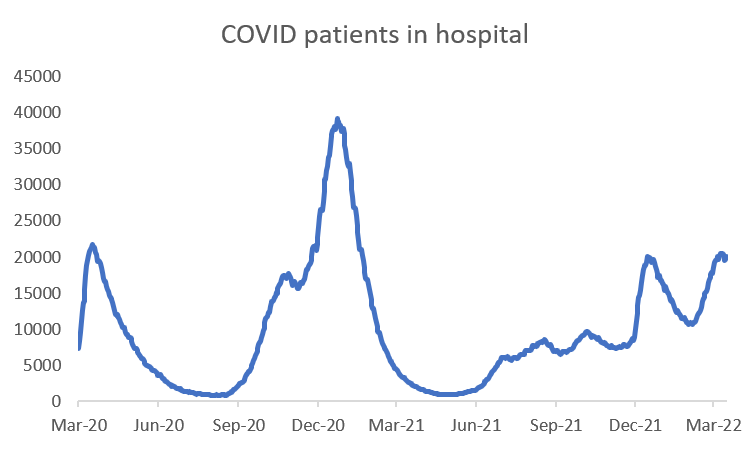
The number of COVID patients in hospital has been going up fairly steadily since last summer, with a jump around Christmas and another jump since early March. But the total number of COVID patients in hospital is less than half of the peak in early 2021. And of these patients, more than half were not admitted with COVID but for some other reason and either acquired COVID in hospital or were asymptomatic and were only declared positive after a test whilst in hospital. The level of these so-called incidental cases is shown in the chart below using data from NHS England – so England only.
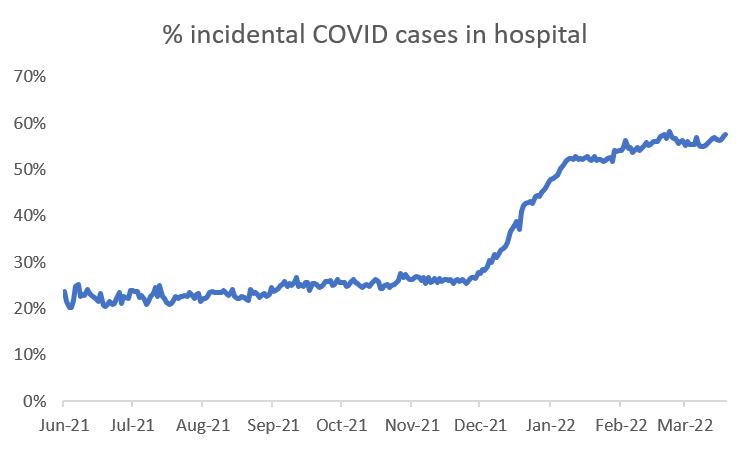
After many months where around 20% of COVID hospital cases were incidental, this began to rise rapidly at the end of last year and is now close to 60%. This means that of the 20,000 or so COVID patients in hospital, only around 8,000 were admitted due to COVID; the rest were admitted for something else entirely.
The number of deaths within 28 days of a positive COVID test again shows an increase since last summer but none of the recent increase in hospital patients appears to be feeding through.
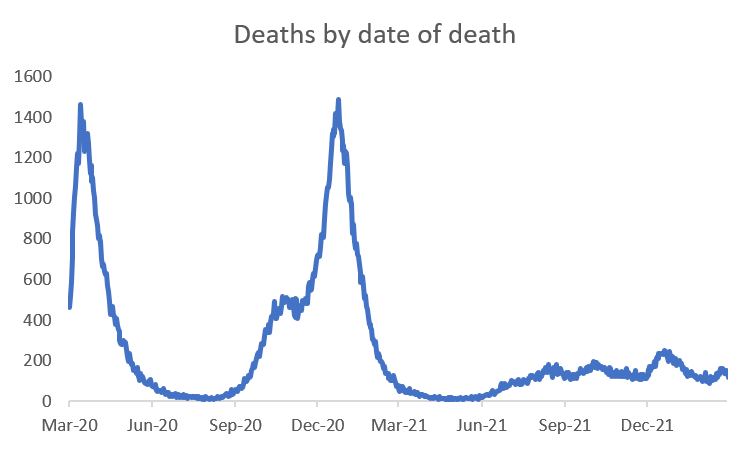
150 deaths a day following a COVID test within 28 days means these account for around 10% of all deaths. There are far more deaths from heart disease and cancer and these conditions are (probably) rightfully now being given greater attention.
One of the factors affecting severity of the disease, in addition to vaccination, may be the increasing level of re-infection. This data has only been collected in England.
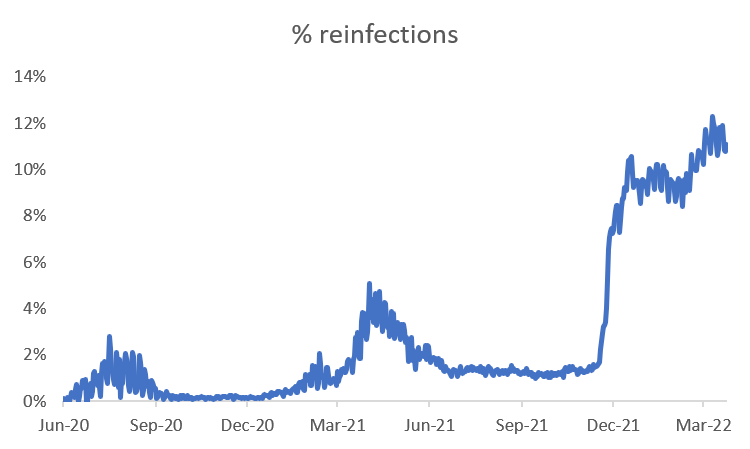
After relatively low levels, with a surge in Spring 2021 when the Delta variant arrived, the level of likely re-infection has risen sharply following the onset of the Omicron wave. Anecdotes also suggest that people can be infected by Omicron more than once. However, re-infection is likely to be less severe than the original infection, particularly if the re-infection is from the same variant.
In summary:
- The number of infections (“cases”) is at record levels
- The level of reinfection has risen sharply since the arrival of the Omicron variant at the end of last year
- The number of patients in hospital with COVID is only at half the peak level
- Over half of these COVID patients were not admitted with COVID but were found to have it after arriving in hospital – they were either asymptomatic or acquired the infection in hospital
- The number of deaths within 28 days of a positive COVID test is about 10% of the previous peak level
So, lots of infection, increasing percentages of re-infection, some hospitalisation and much lower levels of mortality than a year ago. The Government and even the NHS seem quite relaxed about this. Less frequent and now discredited statistics (the “case” figures on the coronavirus website are basically worthless as the level of testing has dropped substantially) mean that the media do not give COVID the coverage they did even three months ago. And in many ways, this seems the right thing to do as the dangers from COVID are clearly much less than in previous years.
This article is one of a series, the previous article on “all quiet on the COVID front” is here.

